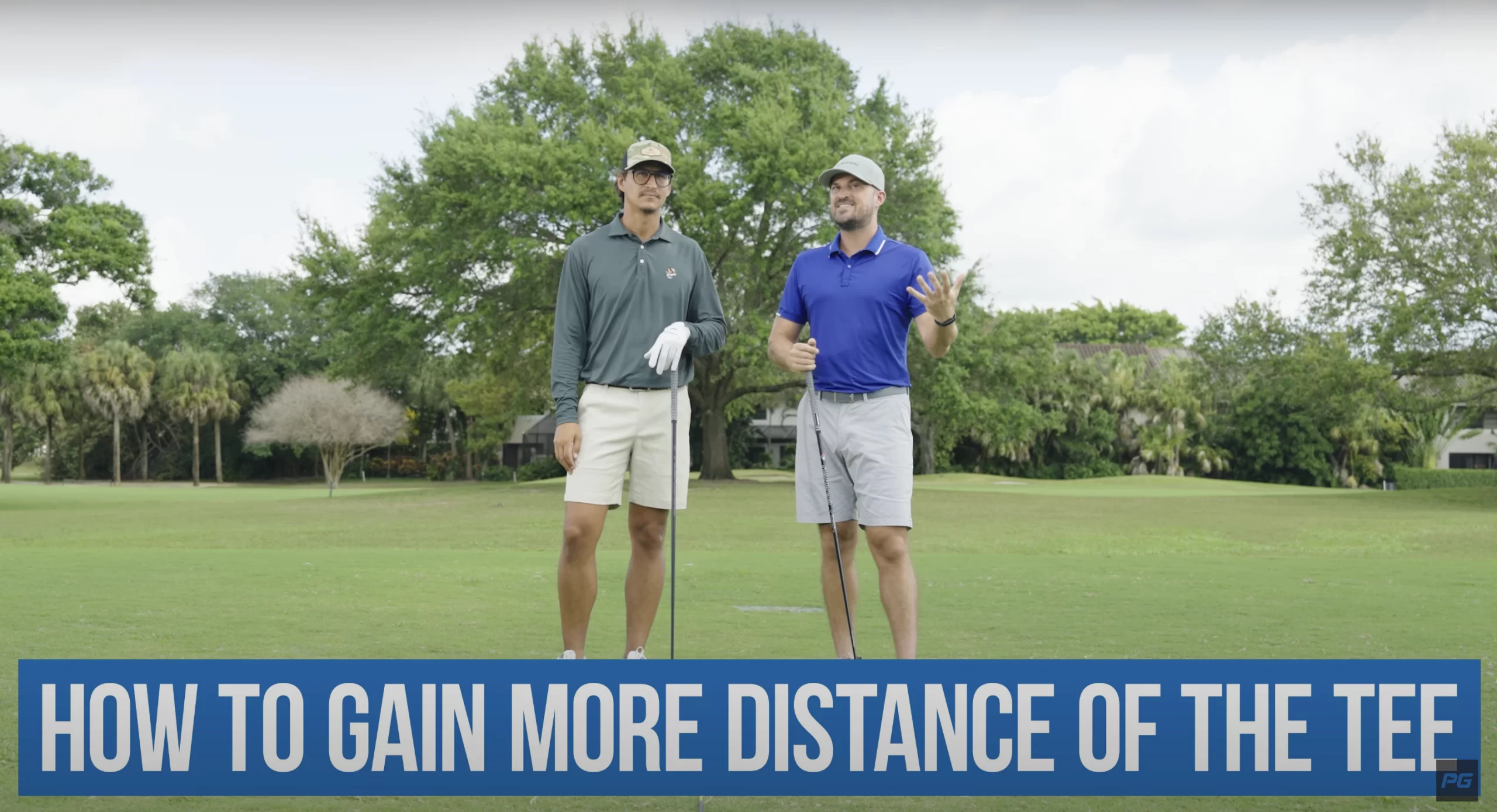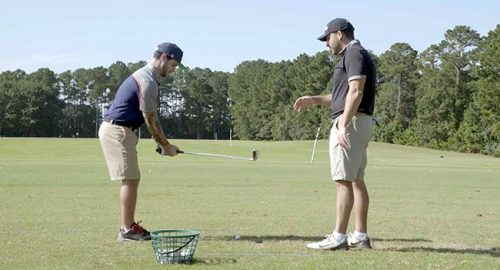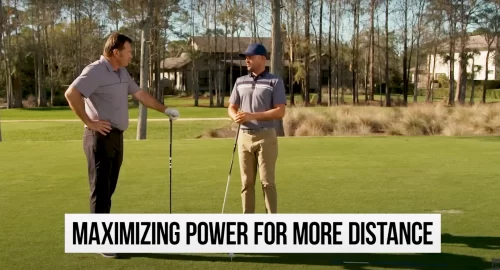
If you’re like us here at Performance Golf, we know you’re always looking for ways to crank up the distance off the tee. Imagine adding 10, 20, or even 30 yards to your drives without spending hours in the gym or thousands of dollars on private lessons. Sounds like a dream, right?
Featured in our recent YouTube video, the “Sling Shot” golf swing is all about getting the right golf swing movements in early. Let’s break down the three key movements to add more distance to your golf swing. Be sure to watch the YouTube video if you’re more of a visual learner!
The Three Key Movements for More Golf Swing Distance
Be sure to implement these three key movements in your next practice routine to add more distance to your golf swing.
Step One: Early Rib Cage Rotation
First up, let’s talk rib cage rotation. If you’ve ever watched the pros, you’ll notice how their bodies seem to move effortlessly, generating tons of power. One of the secrets is starting the swing with your rib cage, not your arms. This early rotation is crucial.
The drill: Place your club across your belly button and sternum, and practice turning your torso. You’ll quickly notice that you have to turn your rib cage to move the club.
No cheating with your arms here! This movement sets up a solid foundation for the rest of your swing, allowing you to build up that explosive power.
Players who nail this rib cage rotation hit the ball much farther. Those who don’t? Well, they often rely too much on their arms and hands, leading to shorter, less powerful shots. So, start with the body, and let the arms follow.
Step Two: Lead Arm Above the Pec
Next, we need to get that lead arm in the right position. During your backswing, focus on getting your lead arm or elbow above the trail elbow. This creates a vertical lift and maintains depth—key ingredients for a powerful swing.
The drill: Place the club on your elbow joints and bring your hands together as if holding the club normally. Turn your rib cage as we practiced earlier, and let your lead arm rise above the trail elbow. This positioning helps you achieve a more vertical swing while keeping the necessary depth. Imagine your lead arm getting over your pec and staying there, setting you up for a strong downswing.
A lot of golfers make the mistake of pulling their arms in close to their bodies. This reduces the potential for power. By ensuring your lead arm stays above the trail elbow, you create a longer, more powerful arc.
Step Three: Trail Arm Working Around
Finally, let’s focus on the trail arm. To maximize your backswing’s depth, you need to pull the trail arm back. Think about how you prepare to throw a ball—your arm moves back and away from your body, right? That’s exactly the motion we’re aiming for in the golf swing.
Timing is everything here. You want to start pulling the trail arm back a bit later in your backswing, once the lead arm is already rising. If you start too early, you’ll get stuck and lose power. But if you time it right, your swing will have that beautiful, effortless flow.
The drill: Get to a point in your backswing where your lead arm is parallel to the ground, then start pulling your trail arm back. Keep rotating your body, so the arm doesn’t get stuck behind you. This combination of movements adds depth and helps generate a ton of power.
Putting It All Together for More Distance
So, how do these three movements work together? Imagine your swing as a finely tuned machine. The early rib cage rotation sets everything in motion.
The lead arm above the pec creates a vertical lift, and the trail arm working around adds depth. When these components are in sync, you set yourself up for a powerful, effortless swing.
Try incorporating these tips into your practice routine. Start slow, focus on each movement, and gradually increase your speed. You’ll be amazed at how much farther you can hit the ball with less effort.
Give it a shot, and let us know how it goes!

